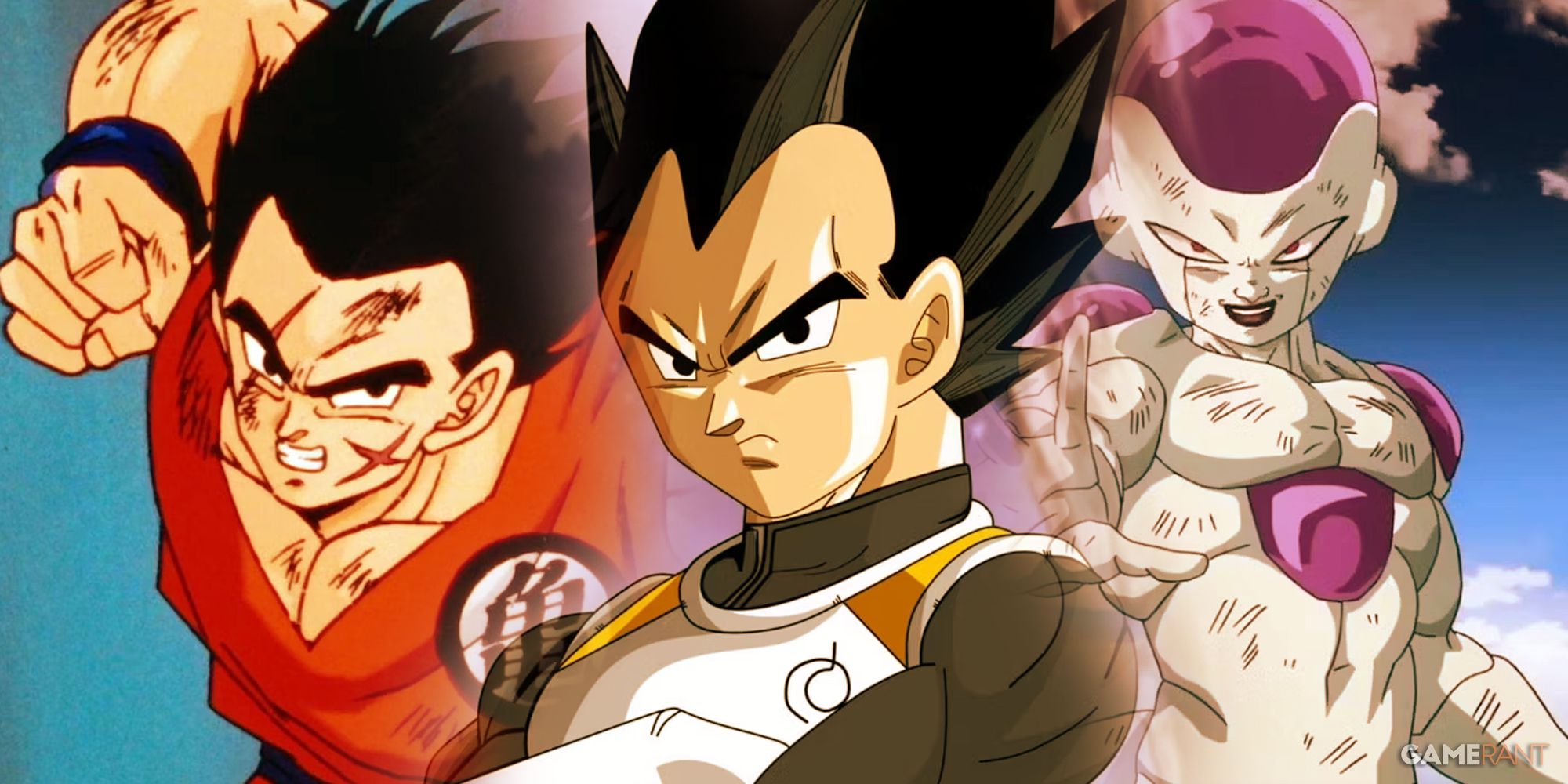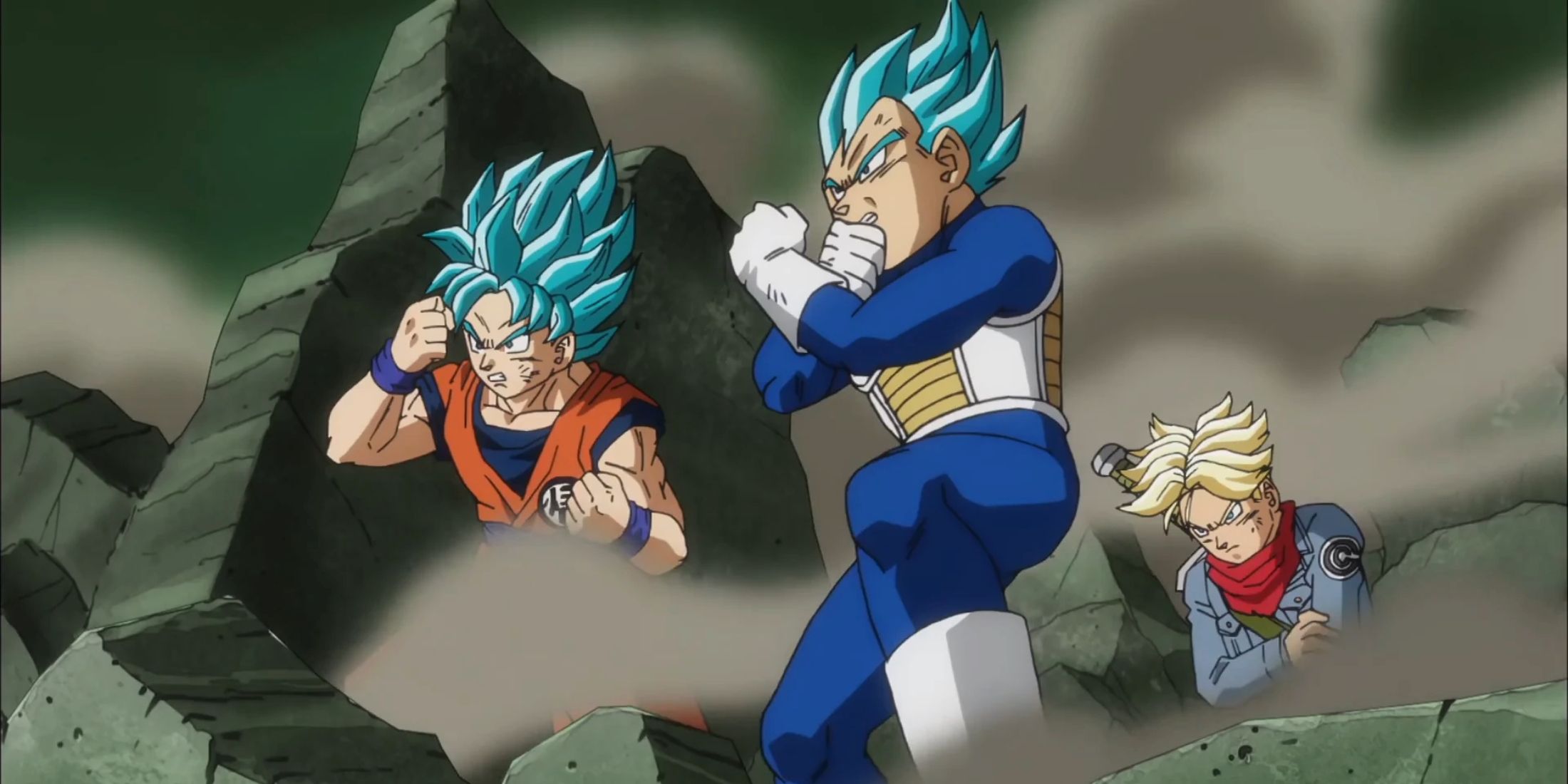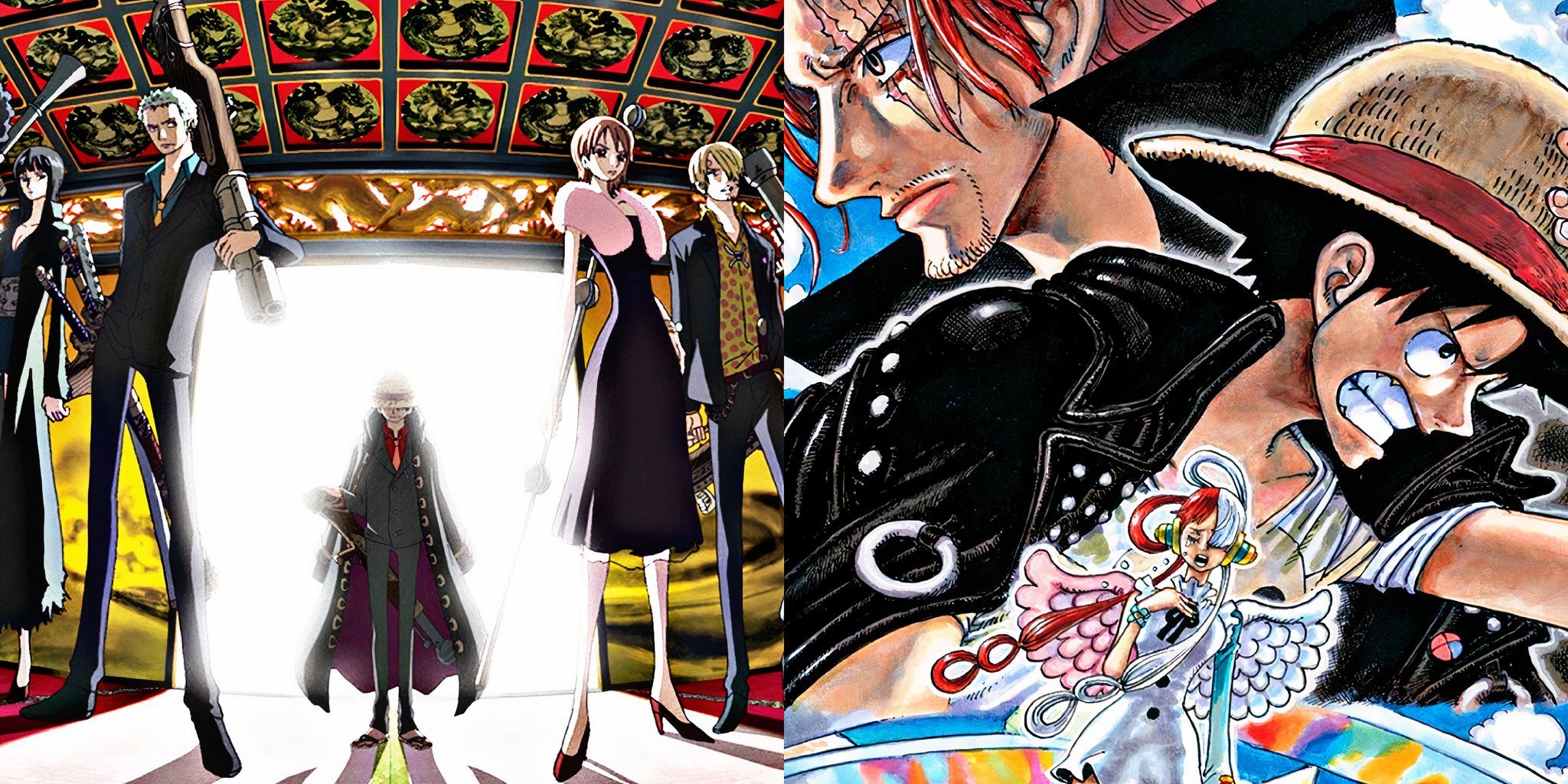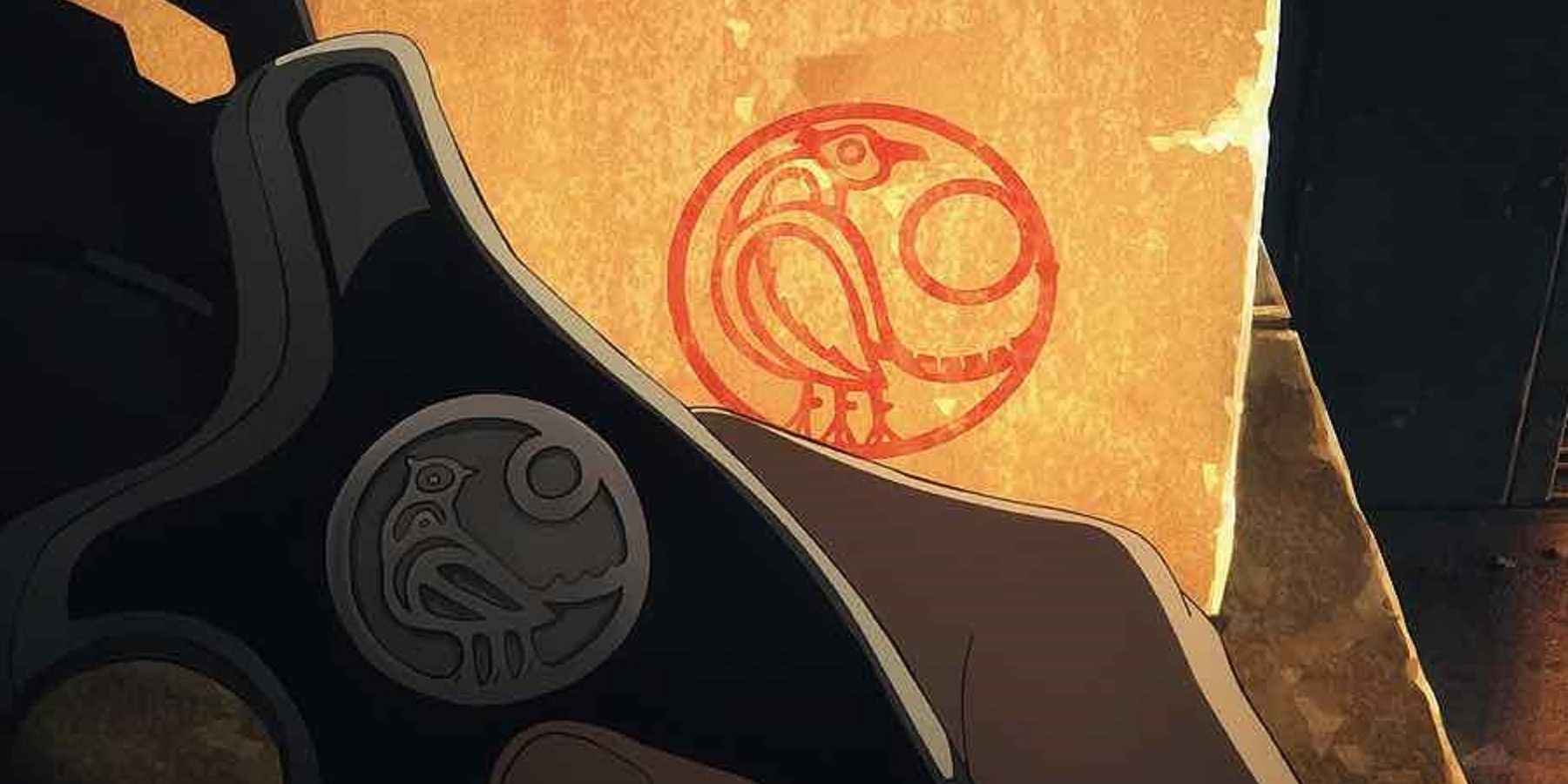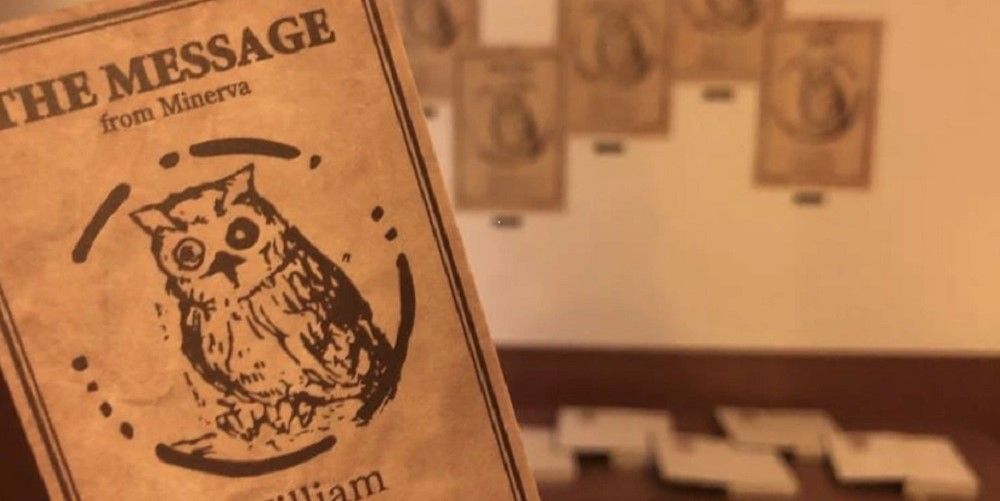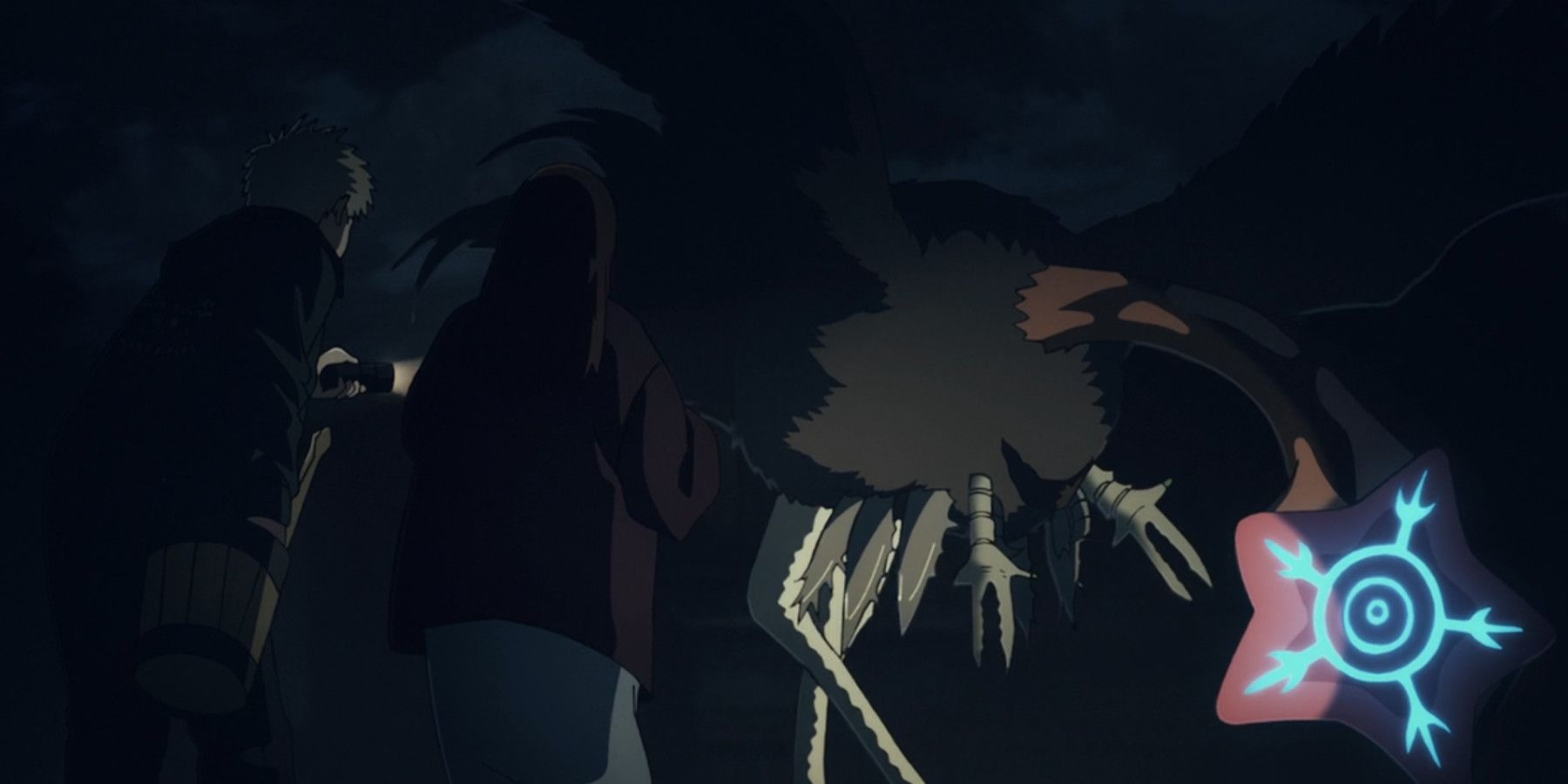By the end of the first episode of Heavenly Delusion, any sweeping comparisons to The Promised Neverland go mostly out the window as the series delves into its version of a post-apocalyptic reality. However, in episode 2, we learn a little more about Maru and Kiriko, and among the various plot-expanding reveals that emerge in this episode, a certain motif appears that may do a little more heavy lifting when it comes to drawing similarities between Masakazu Ishiguro's series and that of Posuka Demizu and Kaiu Shirai.
The Owl of Minerva, also known as the Owl of Athena, is a symbol whose origins go back thousands of years. In The Promised Neverland, the Owl of Minerva is symbol of the children's struggle against the demons and is the means through which coded messages were sent to children in the orphanages. In Heavenly Delusion; however, a similar symbol makes an appearance, again having some kind of high-level significance to the plot as Maru points it out. What exactly does Minerva's Owl symbolize, and does this particular motif have significance in the contexts of both The Promised Neverland and Heavenly Delusion? Let's find out.
– Content Warning: Please be advised that the following article contains brief mentions of sexual assault. –
Origins
The owl is a representation of the goddess Athena, the goddess of wisdom in Greek mythology. Due to the syncretization of Greek and Roman belief systems, the goddess had a Roman counterpart known as Minerva, and due to the association of the owl with the goddess, the owl itself came to be understood as a symbol of knowledge, wisdom and scholarship. The reason for the association of Athena with owls is itself depends on who you ask – according to Hyginus, Athena's owl is Nyctimene ("She Who Stays Up At Night"), who was transformed into an owl by the goddess, who took pity on her after she was disgraced by her father Epopeus; who in some accounts, desired his own daughter and assaulted her, while in others, the nature of the encounter and its initiator varies.
Nyctimene flees to the forest and refuses to show her face in the daylight, opting only to emerge at night. Athena transforms her into an owl, but in Ovid's Metamorphoses, the goddess does this as punishment for Nyctimene "desecrating her father's bed" (similar to the author's account of the Medusa myth in which Athena also punishes the victim). In one Roman account, Minerva's association with owls is simply because they are her favourite bird. Whatever the reason for the association, the owl remains a symbol of wisdom in the western world to this day. Owls are also famously a bad omen: Shakespeare would invoke owls as foreshadowing for character deaths, and in ancient Rome, an owl perched upon a rooftop was considered a harbinger of death if it hooted.
The Symbol
"As the eyes of owls are to the light of day, which they cannot see because their power of vision is weak, although they do see dimly lighted things."
As a philosophical metaphor, Minerva's Owl is thought to have first emerged in Aristotle's Metamorphosis as part of an analogy that compares the vision of bats and the human intellect to explain how subjects can be difficult to understand not due to an inherent quality they possess, but due to an inherent failing on the part of agent looking to understand them. Despite being able to see clearly at night, bats have terrible daytime vision, and owls, as yet another "night bird", were also commonly misconstrued to have this same inability for daytime vision. German philosopher Hegel once commented that "the Owl of Minerva spreads its wings only with the falling of the dusk" as a metaphor explaining that philosophy only comes to understand a situation in history as it comes to pass. It would make sense if it were indeed the Owl of Minerva, but if one closely observes the symbol, which is conveniently placed in episode 2 of Heavenly Delusion at around 18:55 (towards the end of the episode), the depicted doesn't look much like an owl. There is also a sun (or a moon) seen to the right of the animal in the symbol... and it even has a third leg.
The Nyctimene story by Ovid is actually told from the perspective of Corone ("Crow"), a woman who was saved from the unwanted advances of Poseidon by Athena and turned into a crow. The crow resents the loss of her position as Athena's servant bird, which is where any major links between them seemingly end, at least as far as Greek myth goes. This is quite interesting considering the initial similarities between: The Promised Neverland and Heavenly Delusion; the symbolic interpretations of both owls and crows, which both involve wisdom and the ominous foreboding of imminent death; but most importantly – considering the fact that the symbol seen in Heavenly Delusion is not an owl – it's a crow: the three-legged crow seen in various East Asian mythologies and known in Japan as "Yatagarasu".
Guidance
Maru notices the symbol on a box of produce being shipped out to Tokyo from the so-called "Tomato Heaven", and recognizes it from the strange firearm that Kiruko possesses – which she received from Maru's last bodyguard, Mikura, the person whose death established Kiruko's companionship with Maru and their journey to find this nebulous place known as "Heaven". What is significant about the appearance of Yatagarasu is that its presence is considered emblematic of divine intervention. In the second volume of the chronicle of the origins of the gods; the Japanese archipelago and the imperial bloodline known as the Kojiki, Yatagarasu guided Emperor Jinmu to the Kashihara region of Yamato, where he ascended to the throne and established Japan. In the Kojiki, Yatagarasu was sent by Takamimusubi, a god of agriculture and the second of the very first beings to come into existence. Yatagarasu is sometimes seen as an incarnation of the sun; however, its connection to the mythological three-legged crow or Chinese "Jīnwū" might have been the result of an unintentional syncretization due to the various similarities Yatagarasu bears with it.
Neither the Kojiki nor the Nihon Shoki bear description of Yatagarasu as a three-legged crow; however, the association has since stuck due to the description of Yatagarasu as a three-legged crow in the Wamyō Ruijushō, a classical Japanese dictionary of Chinese characters compiled in 938CE. The three legs can be understood as a reference to sunrise, daylight and sunset; however, as one can expect, the three legs can be associated with various kinds of divine trifecta given the widespread significance of the number 3. It is seen as an entity that lives in the sun; hence the circle enveloping the crow and the sun to its right in the symbol. Yatagarasu was also employed as a messenger, which fits Heavenly Delusion's first direct interaction with the Yatagarasu symbol on boxes of vegetables. Kiriko wonders if looking into the origins of the symbol could help them figure out Maru's origins, and even find Heaven; effectively using the Yatagarasu as a guide beacon – just like in myth.

